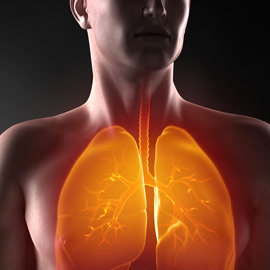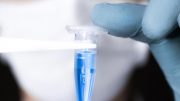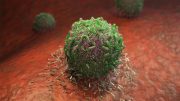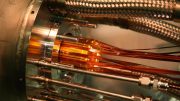
Researchers have unraveled a biological mystery regarding the shared origins of serious diseases like asthma and metastatic melanoma.
Scientists solve a biological mystery about the common genesis of many serious diseases, discovering a trigger to important biologic responses such as the control of cell death and production of inflammatory mediators.
A Yale-led team of researchers has solved a biological mystery about the common genesis of many serious diseases such as asthma and metastatic melanoma, identifying the first known pathway by which their cellular functions turn abnormal, and a healthy process goes haywire. The study is published in Cell Reports.
The team focused on an ancient gene family known as “18 glycosyl hydrolase (GH 18),” and in particular, one protein known as chitinase 3-like-1 (Chi3l1). This protein plays a critical role in the body’s response to foreign pathogens, augmenting the killing of bacteria while controlling inflammation and cell death to keep the immune response from harming normal tissue.
Although previous studies from this Yale team and colleagues have helped define the roles of Chi3l1 in biology, the mechanism by which it works — and triggers disease when overexpressed — was not known. The Yale team knew that Chi3l1 was not functioning as an enzyme would. They theorized that it acted, instead, by binding to a cellular receptor. Their studies led them to focus on a receptor known as IL-13Rα2, which was thought to be a so-called “decoy receptor” that binds molecules but does not induce cellular signaling or activate a biologic response.
Their experiments in mice proved that IL-13Rα2 was no decoy at all, but an active participant in the signaling pathway. The binding of overexpressed Chi3l1 and the receptor IL-13Rα2 began a cascade of subsequent reactions in the mice that resulted in lung disease, lung melanoma metastasis, and a host of other diseases.
“What we discovered was that when Chi3l1 is produced, IL-13Rα2 binds it and acts as a catalyst, triggering important biologic responses such as the control of cell death and production of inflammatory mediators,” said senior author Dr. Jack A. Elias, chair of internal medicine at Yale School of Medicine and a member of Yale Cancer Center.
Elias hopes that further research will identify more receptors in this family, and he sees a potential for developing therapies based on his team’s findings. “These molecules are expressed abnormally in a number of diseases, so the idea that you can control them is exciting. Perhaps we can develop an antibody or a small molecule that blocks their action and changes cellular function.”
Other authors are Chuan Hua He, Chun Geun Lee, Charles S. Dela Cruz, Chang-Min Lee, Yang Zhou, Farida Ahangari, Bing Ma, Erica L. Herzog, Stephen A. Rosenberg, Yue Li, Adel M. Nour, Chirag R. Parikh, Yorgo Modies, and Lloyd Cantley of Yale; and Insa Schmidt of Yale and Hanover Medical School in Germany.
The study was supported by grants from the National Institutes of Health (grants HL-R01 HL093017 and U01HL108638).
Reference: “Chitinase 3-like 1 Regulates Cellular and Tissue Responses via IL-13 Receptor α2” by Chuan Hua He, Chun Geun Lee, Charles S. Dela Cruz, Chang-Min Lee, Yang Zhou, Farida Ahangari, Bing Ma, Erica L. Herzog, Stephen A. Rosenberg, Yue Li, Adel M. Nour, Chirag R. Parikh, Insa Schmidt, Yorgo Modis, Lloyd Cantley and Jack A. Elias, 22 August 2013, Cell Reports.
DOI: 10.1016/j.celrep.2013.07.032









So far anti-bodies are thought to be produced by our immune system once they encounter any disease causing pathogen. The production of anti-body goes on even after that pathogen is eliminated in the body to confront any future attacks by that pathogen. This article tells artificial production of antibodies in future to stop some dreaded disease because the mechanism of production of desired antibody is studied. The so called ‘decoy receptor’ in cells iL13alpha2 happens to do some important work with chitanase 3 like-1 protein (Chi3l1).Nothing in God’s creation is junk after all. We saw some important switching work done by the so called junk DNA also. The artificial antibodies will be designed in future to destroy the pathogen alone and never do any apoptosis on our organs. Thank You.